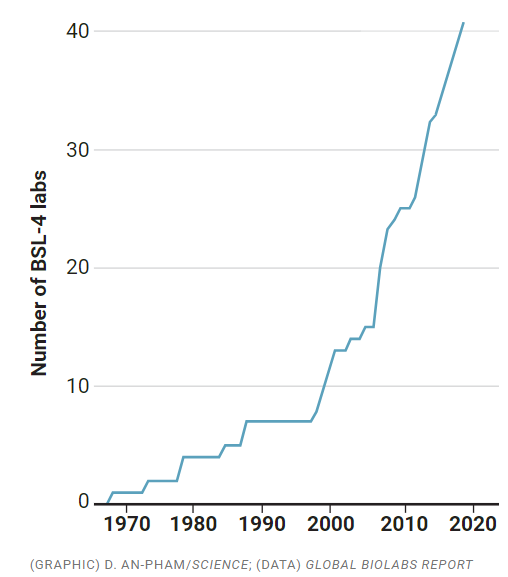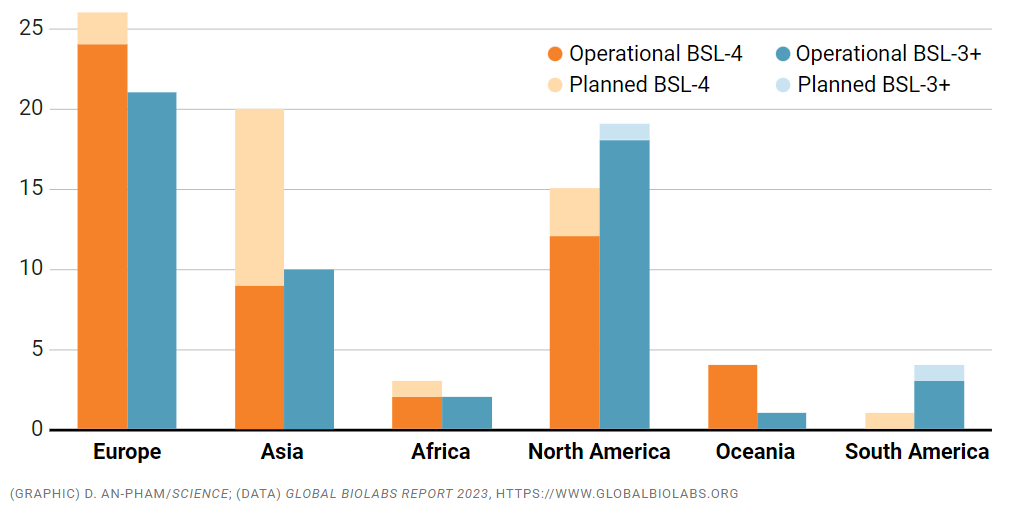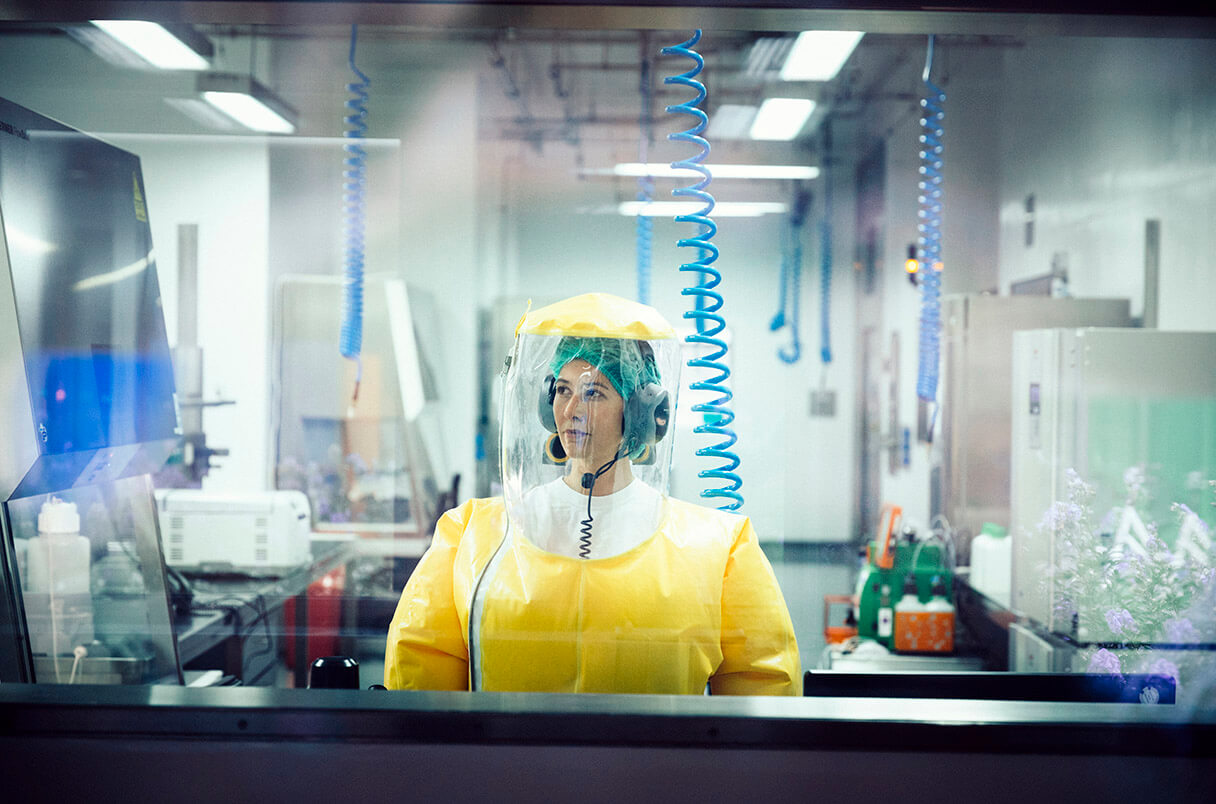The number of high-containment labs studying the deadliest known pathogens is booming.
A new analysis warns the growing number of labs is raising risks of an accidental release or misuse of germs such as the Ebola and Nipah viruses.
“The more labs and people working with dangerous pathogens, the risks go up,” says biosecurity expert Filippa Lentzos of King’s College London, who started the Global BioLabs mapping project 2 years ago with Gregory Koblentz of George Mason University.
Worldwide, there are 51 biosafety level-4 (BSL-4) labs in 27 countries, according to the Global BioLabs Report 2023, which was released on 16 March. These labs have the highest level of safety and security standards, where workers often wear protective suits.
Fifty-one is roughly double the number that existed about a decade ago. Many BSL-4 labs were built in the wake of the 2001 anthrax attacks in the United States to develop biodefense countermeasures and in response to the 2003 multicountry outbreak of severe acute respiratory syndrome (SARS). Three-quarters of the BSL-4 labs are in urban areas, creating risk for more people if a pathogen escaped.
Eighteen BSL-4 labs are slated to open in the next few years, most in Asian countries such as India and the Philippines, that want to bolster responses to local threats and future pandemics.
The report also documented 57 operating BSL-3 “plus” labs, mainly in Europe, which are BSL-3 labs with extra safety and security measures. Researchers often use these labs to study animal pathogens such as highly pathogenic H5N1 avian influenza.
Growth industry
Europe has the most biosafety level-4 (BSL-4) labs, and three-quarters are in urban areas. (Ten existing labs without known start dates are not shown.)

Global spread
Although most biosafety level-4 (BSL-4) and biosafety level-3 plus (BSL-3+) labs are in Europe and North America, Asia is also home to many of these facilities where dangerous human and animal pathogens are studied. The number of BSL-4 labs there will double in the next few years.

Concerns about an increasing number of BSL-4 and BSL-3 labs aren’t new, but they have grown since the SARS-CoV-2 pandemic began in 2019. One hypothesis is that the virus came from a lab. And many countries, particularly those building their first BSL-4 labs, lack strong policies and methods to monitor such labs, the report says.
Only Canada has legislation overseeing all experiments, even those with no government funding, that are considered “dual use” because the results could potentially be used to cause harm.
CLICK HERE TO READ MORE FROM THE REPUBLICAN VOICE
The report urges the World Health Organization to strengthen guidance and individual countries to agree to audits by outside experts to ensure that their labs meet international standards.
source: science.org/growing-number-high-security-pathogen-labs-around-world-raises-concerns
























